When a female visits the male's territory, he chases her down for copulation
and ten ovipositing. The photo below shows a pair in tandem, with the female
ovipositing by tapping the surface of the rivulet rapidly.
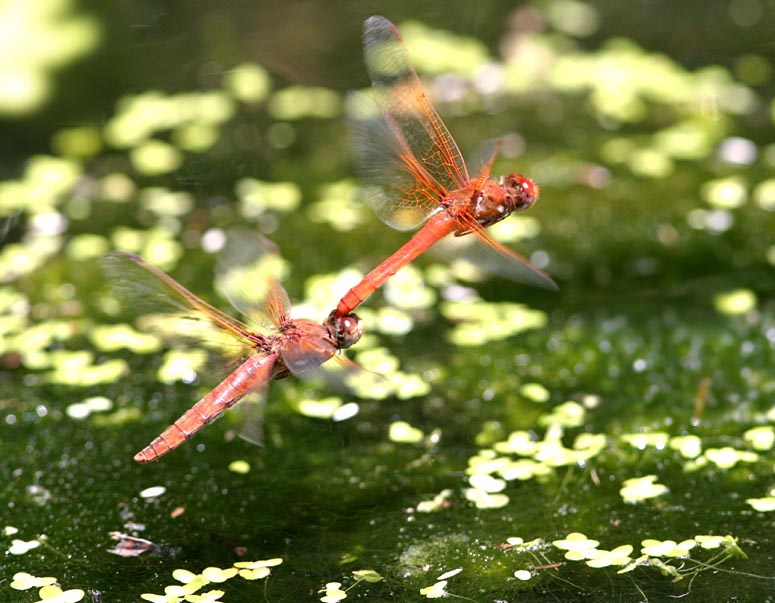
|
|
With good views, a good character on both sexes is the presence
of two white elongated spots on the thorax. See how apparent they can be
on this photo of a male (below). These spots are often hidden by the wings,
especially when the wings are held forward, but their presence will rule
out the possibility of something much rarer.
|
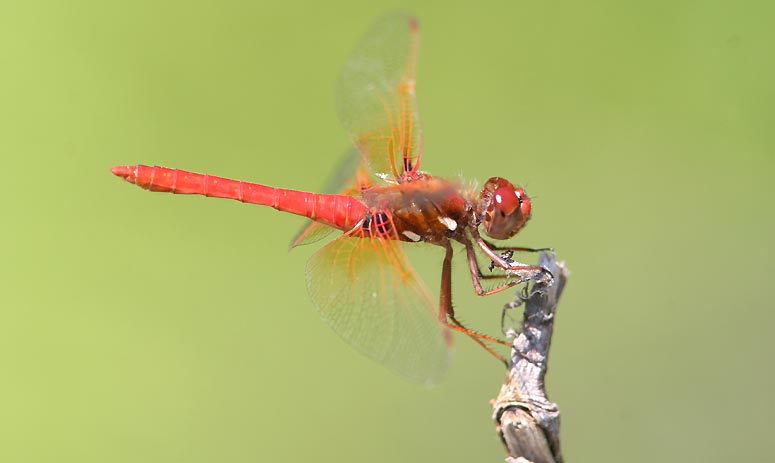
|
|
Sometimes, as in the view below, the wings are held far forward
and obscure the thorax and the face.
|
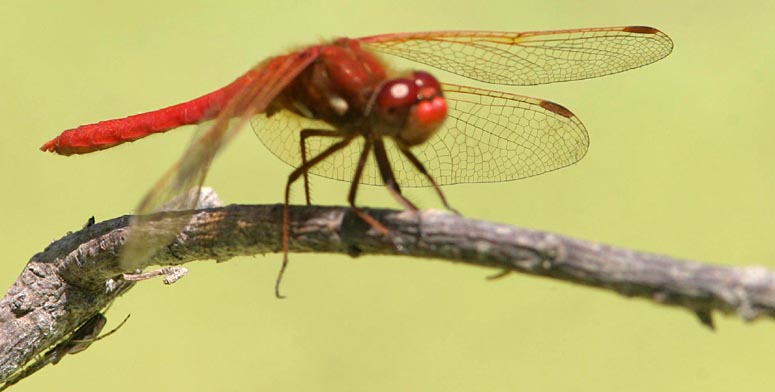
|
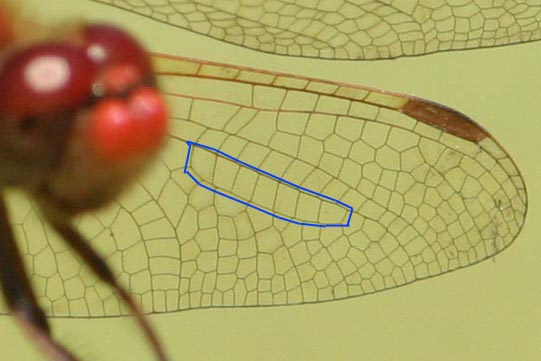 |
But we'll use this view to illustrate another point. Look at the set
of cells in the wing venation that are outlined in blue. These are the
cells between the radial sector and the radial planate, and in this species
[Cardinal Meadowhawk] there is just a single row of cells. On Red-veined
Meadowhawk, much rarer in MTY, the middle part of the outlined set of cells
have a two rows of cells. This, and other i.d. characters, are discussed
in more detail in Manolis (2002). |
|
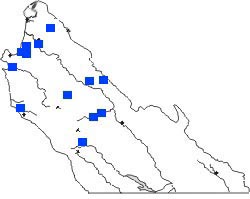 Cardinal
Meadowhawk has been encountered in MTY between February-September [extreme
dates 2 Feb-12 Sep] at ponds and streams widely distributed in the lowlands
and foothills [sea level to 1600' elev.]. The peak dates seems to be about
April-August. The map shows a selection of known sites where the species
has been recorded. It is likely present, in season, in suitable habitat
anywhere in the county. In California, although primarily a foothill species,
it has been found upslope to 7000' elev. Its flight season is generally
March-October, although there are winter records from southern California
(Manolis 2002). Cardinal
Meadowhawk has been encountered in MTY between February-September [extreme
dates 2 Feb-12 Sep] at ponds and streams widely distributed in the lowlands
and foothills [sea level to 1600' elev.]. The peak dates seems to be about
April-August. The map shows a selection of known sites where the species
has been recorded. It is likely present, in season, in suitable habitat
anywhere in the county. In California, although primarily a foothill species,
it has been found upslope to 7000' elev. Its flight season is generally
March-October, although there are winter records from southern California
(Manolis 2002). |
Literature cited:
Manolis, T. 2003. Dragonflies and Damselflies of California.
Calif. Natural Hist. Guide 72. Univ. of Calif., Berkeley, CA.
|
| PHOTOS: All photos are © 2006 Don Roberson; all rights
reserved.
TOP
TO MONTEREY
ODONATA
TO BIRD FAMILIES
OF THE WORLD
TO MONTEREY COUNTY
PAGE
TO HOME PAGE
|
 Cardinal
Meadowhawk has been encountered in MTY between February-September [extreme
dates 2 Feb-12 Sep] at ponds and streams widely distributed in the lowlands
and foothills [sea level to 1600' elev.]. The peak dates seems to be about
April-August. The map shows a selection of known sites where the species
has been recorded. It is likely present, in season, in suitable habitat
anywhere in the county. In California, although primarily a foothill species,
it has been found upslope to 7000' elev. Its flight season is generally
March-October, although there are winter records from southern California
(Manolis 2002).
Cardinal
Meadowhawk has been encountered in MTY between February-September [extreme
dates 2 Feb-12 Sep] at ponds and streams widely distributed in the lowlands
and foothills [sea level to 1600' elev.]. The peak dates seems to be about
April-August. The map shows a selection of known sites where the species
has been recorded. It is likely present, in season, in suitable habitat
anywhere in the county. In California, although primarily a foothill species,
it has been found upslope to 7000' elev. Its flight season is generally
March-October, although there are winter records from southern California
(Manolis 2002).